

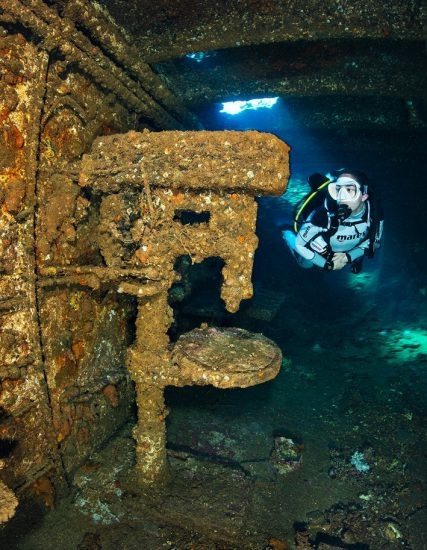
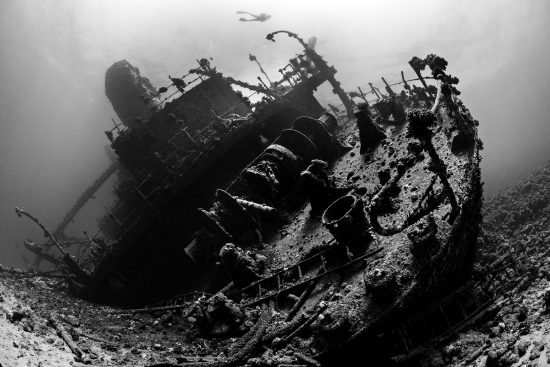
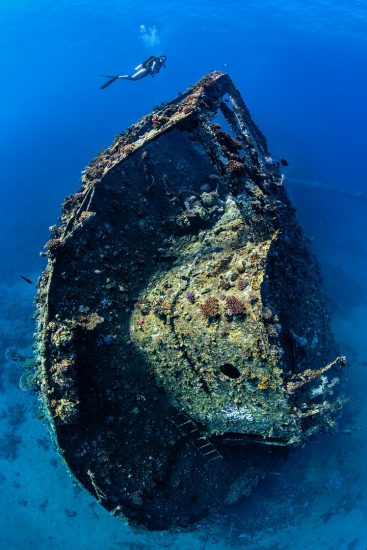
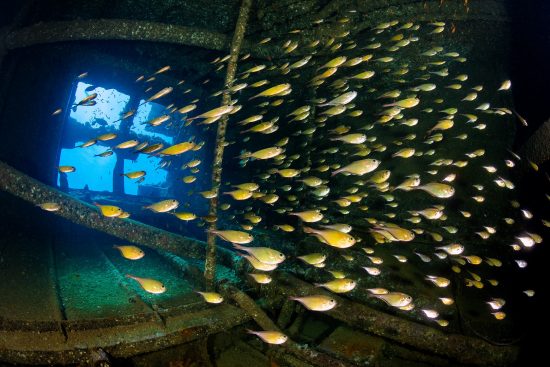
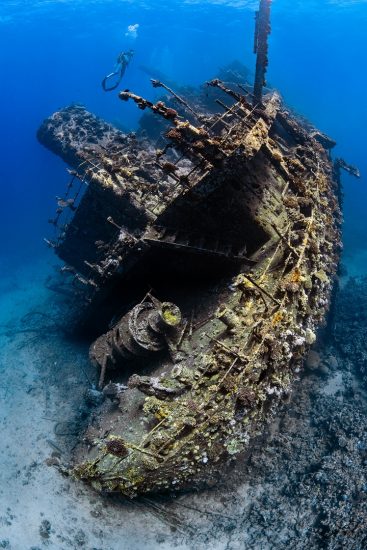
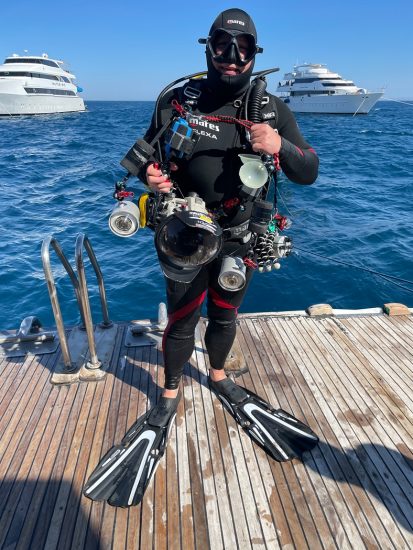
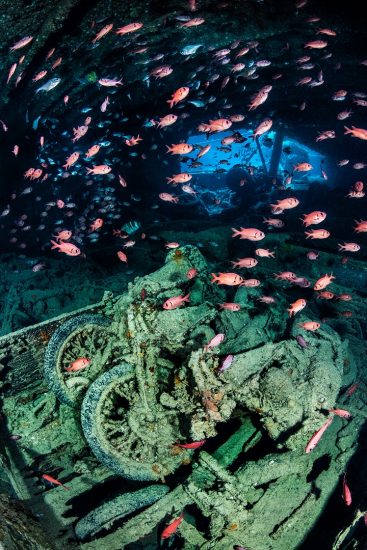
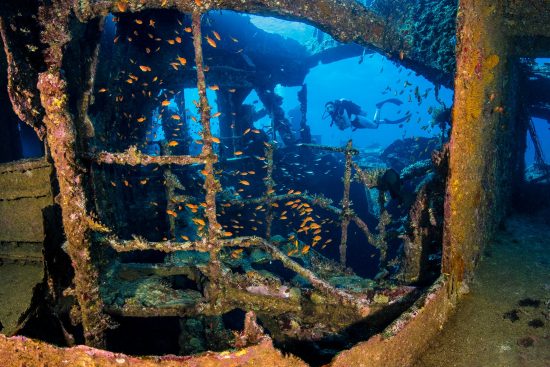
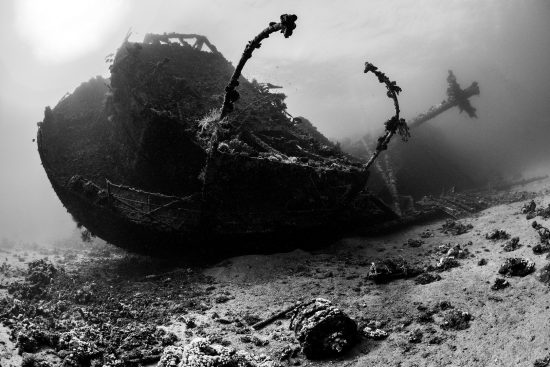
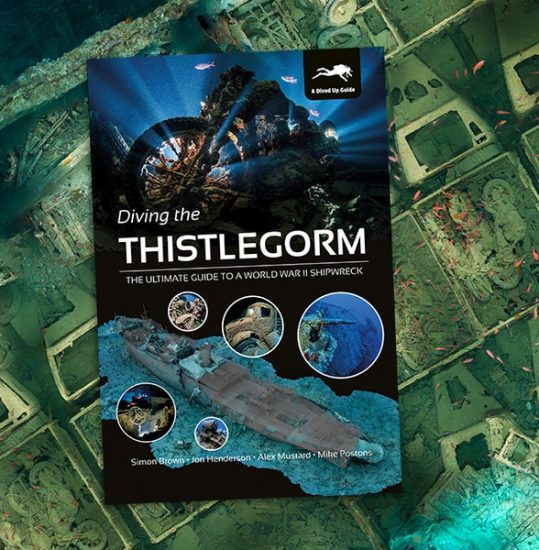
I am always surprised by how many underwater photographers tell me they don’t like wrecks, not to photograph anyway. It seems that many snappers would rather aim their cameras at marine life and therefore only like wrecks that are visited primarily for the fish, like the Yongala in Queensland, Australia or the Liberty in Bali, Indonesia.
Photographers are also put off because wrecks are hard to photograph well, which is perhaps surprising when we consider that they can’t actually move! This was my attitude years ago too, well, it was before I started diving in the Red Sea. The Egyptian Red Sea taught me to love photographing shipwrecks, and despite being a fish-loving marine biologist, this passion even led to me writing a book on the Thistlegorm wreck.
This passion for wreck photography is also a major motivation for returning to the Red Sea each summer to run photography workshops. Wrecks always form an important part of the curriculum because they challenge photographers in a completely different way – there is lots and lots to learn there. For starters, the most impressive shots of wrecks are usually the biggest possible views, panoramic pictures that show the viewer large, recognisable sections of ship. These scenes are far too big to be able to illuminate with our flashes, so we’re forced to work with the ambient light, learning how to read it, understand it and exploit it for both colour and black and white images. Then it is time to head inside, to tell the full story of the wreck. Here photography becomes much more challenging, but with expert control of lighting and advanced techniques, like off-camera light sources, we can create revealing images to be proud of.
The Red Sea is filled with wrecks, and you can easily find a diver who will name each one as their favourite. For me, my moorings of choice are either at Abu Nuhas reef or the Thistlegorm at Sha’ab Ali.
Abu Nuhas always feels like such an adventurous location to be, away from land, out of sight of hotels and close to the shipping lanes. Its position, of course, is part of the story, because the northern face of this small reef, that juts out into the open sea, is what has claimed the wrecks. Abu Nuhas, famously the resting place of 4 large cargo ships, all lying in parallel, bows into the reef, all perfect depths for easy diving. The most famous three, the Carnatic, Chrisoula K and Giannis D, are highly photogenic and can entertain photographers for years as each visit reveals new angles for shots. The fourth, the Kimon M, would be a standout wreck anywhere else in the world, and is often overlooked for its exalted neighbours.
Given that the wrecks cannot move, but the sun tracks across the sky during the day, I have a strict preference for the timing of my dives here. The Carnatic is famed for lush soft corals and the exposed ribs of its structure are usually home to schools of glassfish and sweepers. I like to dive this dive in low light, when there is more chance that all the soft corals will be open and the ribs are more atmospheric. The Giannis D is at its best just before lunch, when the photogenic stern is illuminated from the side, and the portholes line up with the sun creating rows of light beams inside. I like to dive the Chrisoula K as the first dive, when the bow is lit, the stern offers perfect lighting for angles for both colour and black and white images, and the whole port side of the wreck has light beams shining in, lighting up the tiles inside.
The Thistlegorm isn’t just the most popular wreck in the Red Sea, but because so many have enjoyed diving on the wreck, it has regularly been voted people’s favourite dive in the world.
What makes this wreck special is what is inside, because the Thistlegorm was a British supply ship during the Second World War and was carrying more than 70 military trucks and over 100 motorbikes. Surprisingly, until recently, most of this cargo was misunderstood, partly because analogue camera equipment and the lack of nitrox hampered the early surveys, and partly because nobody thought to check that what people had said in dive briefings and repeated in magazine articles and books was correct. I played my part in correcting that, and over the last 15 years photographed all the vehicles and showed my pictures to military vehicle experts back in the UK to identify them, teaming up with archaeologists from the UK and Egyptian universities and making a small contribution to a 24,000 image photogrammetry survey of the wreck which ultimately led to our book ‘Diving the Thistlegorm’, published in 2020.
 Alex
Alex 24th August 2022
24th August 2022